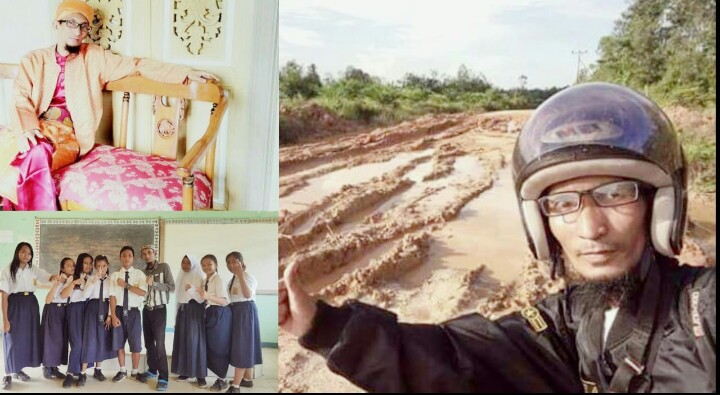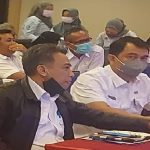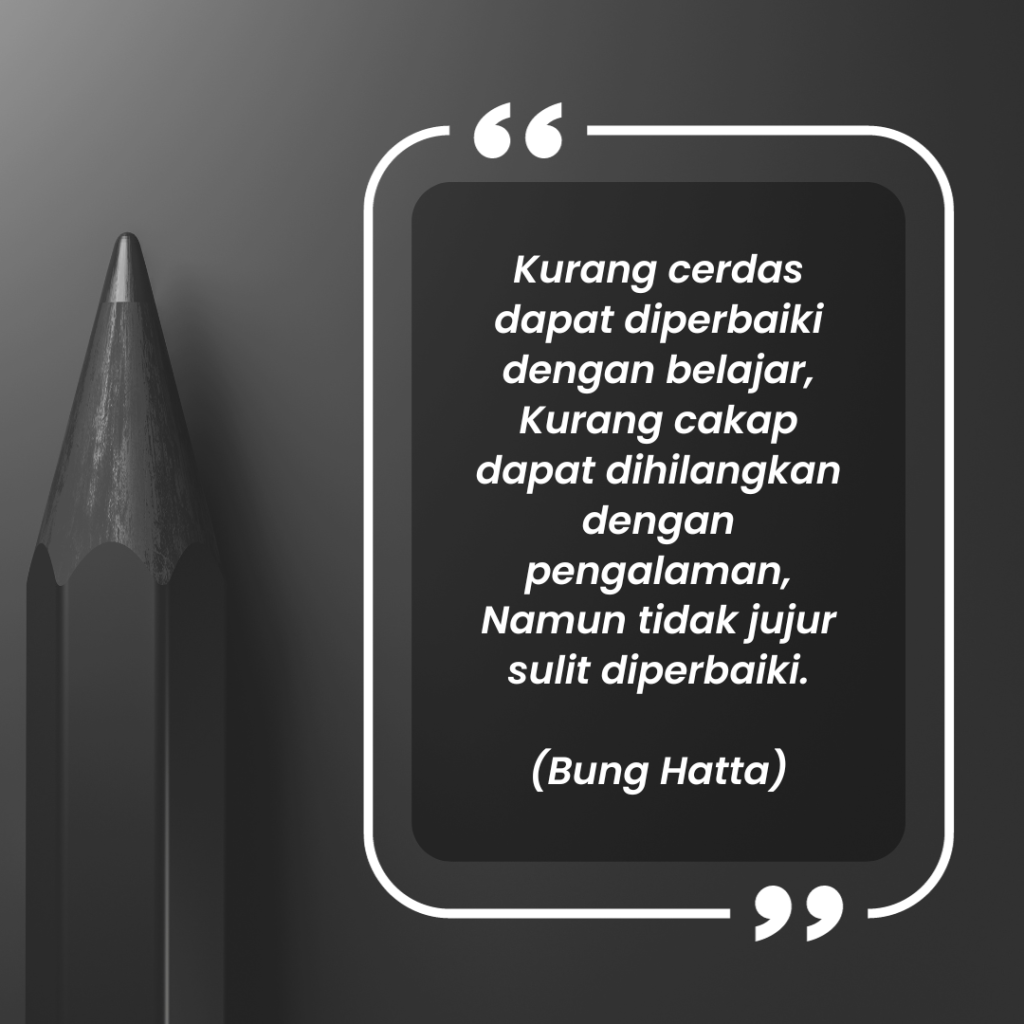By: Verry Firdaus*
Translator: Jeammy Rodjas
Since the viral case of Sultan Hamid II is feasible and unfit as a National Hero, I conclude that it was his closeness to the Netherlands that propped him up as a National Hero.
The hero himself is the origin of the word from PAHALA = POLICY. Then the hero is a person who can provide goodness. Sultan Hamid II clearly gave a lot of goodness through the legacy of the National Symbols and the recognition of Indonesia’s sovereignty through the KMB negotiations (1949).
My next explanation is about the Netherlands. The Dutch basically came to Indonesia for territorial control.
The Netherlands as a human being, of course there are good humans and not good humans. Didn’t our Christian brothers introduce Christian Religion from the Dutch? For them of course the Dutch are rewarded for them. Look in Pontianak, the Sultan gave the land of 1000 which now stands majestically with the Cathedral Church, the Sisters of Education institutions, Brothers and has given birth to many regional heads. Including the Deputy Governor of the Environment Kadir and Governor Sutarmidji. Laurentius Herman Kadir alumni of Brother and SD Sutarmidji alumni of Santo Paulus High School.
Christianity and Islam in West Kalimantan have been harmonious since then until now. Educational institutions and religious propaganda grow rapidly side by side.
Lately in this country the issue of clash between groups has become increasingly sharp. In my opinion, here is the importance of history, how former figures can be used as inspiration about how the association of multi-ethnic and religious people can get along well and even work together.
It should be remembered that the collaboration with the Netherlands for the Sultanate of Pontianak since 1774 between the founder of the Sultanate Sultan Syarif Abdurrahman Alqadrie with the Netherlands. Sultan Syarif Abdurahman, son of Habib Husein. Habib Husein married Nyai Tua, a native of Dayak from the South, namely Ketapang.
In the body of Sultan Hamid II Alkadrie flowed the blood of his Dayak grandmother, his mother who was a Deathly Hate / South Arab. Only the terminology now classifies Arabic which is identical to Islam, Malay. The Sultanate of Pontianak was led by the Sultan, an ethnic Malay, of Arab / Habib descent. Whereas Hamid also needs to be remembered for Dayak blood, so he is not surprised that he is pro Dayak by forming a Dayak Company who was educated in military science.
Let’s explore the city of Pontianak. Open our eyes all. Read the names of the regions.
If we look at old settlements in this city, we can name Kuantan, Banjar Serasan, Saigon, Siam, Cambodia, Bali, Kampung Arab, Kampung Bugis etc … Search for these names. You will get a pluralistic spirit from the beginning of the formation of this West Kalimantan population residence. The federalist spirit has been in its inception.
Those whose names are outsiders, of course, have the Sultan’s permission to be able to live in Pontianak. They also live in harmony and peace. Likewise, the first Dutch arrival in Pontianak.
Sultan of Pontianak Sy Abdurachman Alkadrie welcomed, signing a political contract. They were given territories to settle. Among them were built churches and schools.
If we convert with the severity of the divisions of the children of the Nation in the name of religious teachings, look at our elders, a Sultan, a Habib, the great scholars who wrote the Quran 30 juz by hand, how could they allow the establishment of the Church? Neither are they “Muslim” scholars, functioning the church not only for the Dutch, but also for natives / immigrants who are Catholics or not for learning. Learn to farm, carpenter, sew, etc. Thus the same wisdom was continued by the Sultans in the following period.
Let’s conclude first. At this point there is merit. There is kindness. There is an element of hero. Namely the goodness of tolerance, meaning a form of heroism. Where today is very very needed.
In the territory of Indonesia today, the Netherlands itself has two types of territorial relations. There is an absolute nature they are in power to use colonial law. There is also a zelfbesturen nature, in which the legal authority uses local natives. These are the kingdoms that are still running in the Dutch East Indies era. Including the Sultanate of Qadriyah.
So the relationship between the Sultanate and the Netherlands is bilateral. Something that is lawful until now. The consequences of bilateral relations can of course be mutually beneficial, one can also gain one loss, sometimes also give birth to conflict, then fight. This is very easy to understand.
Indeed, in the perspective of the colonial region, for Indonesia it is now very easy to determine who the hero is. Namely, against the Dutch. For example there are natives who refuse, then rebel over labor, he war against the Dutch. Be a hero.
Now if the region is zelfbesturen? For example the Dutch are willing to sign a contract with the Sultan? Then build a plantation? Then the Dutch brought in workers from the colonial territory by force, there was also struggle, but could the Sultan who signed the contract be categorized as Dutch accomplices? Here in my opinion, the historian must have put him right.
Specifically in the context of discussing the title of hero for Sultan Hamid II Alkadrie who until now is still stuck in the Title Council. Deputy Chairperson of the Title Board Prof. Dr. Anhar Gonggong called Sultan Hamid “multiplication”.
There is a Professor of history questioning the “heroism” of Sultan Hamid II because in 1946 there was in the Netherlands the rank of Special Aide, at the same time the Dutch fought in Indonesia. There are two stories of heroism here.
Sultan Hamid II as the Sultan of Pontianak succeeded his father who died against Japan (1941-1944) when Pontianak was not yet a part of Indonesia. If he gets a degree from outside Indonesia, is it against Indonesian rules? While Sultan Hamid sovereign over his own kingdom.
Secondly, the narrative or heroic story in Indonesia, that the hero is the one who fights against the Dutch, then legally, because Sultan Hamid is in the Netherlands, it is precisely as proof that the Sultan enters the heart of the Dutch defense. He fought with diplomatic channels with the Dutch in the interests of Indonesia.
Moreover the information presented by the Sultan to the Netherlands was not for the purpose of the Pontianak Sultanate to help the Dutch attack Indonesia. But precisely the intelligence of Sultan Hamid II as his father’s successor, as a Breda-Dutch alumni, pursuing a career to the rank of Major General, was used to the fullest interests of Indonesia. The Sultanate that he led even joined Indonesia. We conclude, once again, a lot of good values have been bestowed by Sultan Hamid II Alkadrie for the Republic of Indonesia.
Now we return to the term that is popular in the country today (follow in the Agama Akal TV, YouTube channel), that Sultan Hamid II is a hero or a traitor? Isn’t it clear that there are groups who place that national heroes are those who fight based on the value of their respective groups? The example of the Agama Akal TV group whose specialty was stated through uploads on its channel about Anti-Arab Descendants and the figure of Sultan Hamid II was only made one of the issues for the Republic of Indonesia for its interests. As for the terminology of a hero, someone who bestowed virtue, Sultan Hamid II Alkadrie never eroded, even though he had been buried in the mud of history since the beginning of independence.
Many of the virtues of Sultan Hamid II Alkadrie who continue to live, inspire us as children of the nation. Examples of his intelligence. He has studied at ITB. He studied mathematics, physics, chemistry, well. Naturally the design of his country’s emblem is very symmetrical and geographical. He even studied mechanical science as far as Israel.
If you read Hamid’s history up to Israel, and then mate in the context of contemporary religious observance, the Anti-Jewish specialization group will fry this information at will. Sultan Hamid II might be labeled as “Jewish Minion”. Though the value we want to take is the value of goodness / heroism in the spirit of studying.
Just as he pursued a military career at KNIL to reach the rank of Major General. One party accused him of being pro-Dutch. one party judged he had succeeded in building achievements in which other indigenous children had stalled. Even though there were many native people who had pursued their careers at KNIL at that time from all corners of the archipelago.
Then mastering several foreign languages in the Sultan Hamid himself. This is all goodness, virtue in terms of virtue of studying. Doesn’t the key language open the world? Something that is highly recommended by the Indonesian Ministry of Education and Culture. The principle is the value of this education in the 1945 Constitution.
Then how he designed the Garuda Pancasila State Coat of Arms. It seems that the true spirit of his nationality to accommodate all components of the Nation.
Indonesia’s history begins with the triumph of the Hindu-Buddhist kingdom, so he asked Ki Hadjar Dewantara for input to see eagle reliefs in the temples. He knew the majority of Indonesia’s Muslim population, he asked Muhammad Natsir for the Islamic elements.
As a Pontianak-DIKB person, he also asked for advice from his Dayak ethnic friends, Panglima Burung, Massuka Djanting, Ovaang Oeray etc. Well, because this is a state symbol, it must be good so that it can be side by side with other countries’ symbols. This means that this can be used as a millennial example at this time in which the figure of nationality, do not forget the local content of the region and international global outlook.
Sultan Hamid II loves Indonesia very much. The desired concept is that Indonesia is built on the standards of natural resources and independent human resources. It’s not easy, of course. Because HR at that time was minimal. Especially DIKB, during 1941-1944 1-2 of its best generation were victims of the cruelty of Japanese assassination.
If we look at the structure of the DIKB government agency personnel, it seems that the representation of the ethnic groups is correct. At the executive body of the Daily Government Agency (BPH) which has 5 members, namely J.C Oevaang Oeray, A.F Korak, Mohamad Saleh, Lim Bak Meng, and Nieuwhusysen. The Legislative Institution / West Kalimantan Council consists of 12 representatives of self-government, 3 representatives of Neo-Swapraja, 8 ethnic Dayaks, 5 ethnic Malays, 8 ethnic Chinese, 4 Indo-Dutch people. He really paid attention to the acceleration of the quality of human resources from Dayak ethnicity, for example in his policy of military training during the day, learning to read at night without looking at physical form, something that in Java was standardized on how to measure height, length of breath, number of teeth, to education level.
Examples of the formation of the “Dayak Company” which has been prepared as a core force that will join the TNI. But masygul, when the TNI first entered West Kalimantan was without coordination with the Head of DIKB. as the Head of DIKB is causing anger.
Sultan Hamid II has even recruited 100 Dayaks to be trained as police officers. Trained from very basic. Even many do not know to read and write.
Naturally in his day, Sultan Hamid was idolized to remote areas. In addition to the love of the region, Sultan Hamid II also loved INDONESIA. He wants to be with other regions / federations to be part of one INDONESIA COUNTRY.
But the direction of his thinking was the FEDERAL STATE / UNITED STATES OF THE REPUBLIC OF INDONESIA. This is what he fought for in negotiations which could finally be agreed upon. DIKB also became a part of RIS. It was through RIS that the sovereignty of the Republic of Indonesia was recognized by the Netherlands and followed other countries in the universe until now.
Yes it has become a historical destiny, finally RIS disbanded. We are the Homeland. But the concept of DIKB was absorbed in the spirit of regional autonomy. Where is it now bicameral. There are legislative and senate chambers. Be honest with history, that the values of virtue – heroism continue to replicate themselves. That is what is called the merit of Jariyah. The reward that flows unceasingly, even though the person concerned is gone.
From this we can understand why the voice of West Kalimantan who understood his story, from all ethnic and religious groups, fought for him as a National Hero. Even stretches of the highway that connects the Kapuas River – the longest river in Indonesia with the Landak river. His name is Jl Sultan Hamid II. Since President Abdurahman Wahid, Megawati Soekarno Putri, Susilo Bambang Yudhoyono, to Joko Widodo through here with Paspampres, ministers and his entourage. No one asked that the name of Jalan Sultan Hamid II be changed.
Naturally, if West Kalimantan residents were really disappointed there were those who labeled Sultan Hamid II Alkadrie as a “NIDITOR OF NATION” while they were breathing in the sovereignty of the country championed by Sultan Hamid, using the emblem of the emblem of the state by Sultan Hamid and enjoying regional autonomy, the fruit of Sultan Hamid’s struggle.
He dared to attach the body. Dare to go to jail. Dare his name buried in the mud of history. Dare to assume Bung Karno until he guides the shahadah in his last days. Pure fellow children of the Nation. Fellow fighters of the Republic of Indonesia.
For current national figures, both at the central and regional levels, the figure of Sultan Hamid II is loved by all groups in Indonesia. Look at the thousands of people who want to be present watching the trial. Though he was detained without trial for years, so that the memory of the population eroded faintly. Something that really intrigues me at that time to reveal the opaque history of the present. (*Teacher in remote West Kalimantan: SMPN 3 Belitang Hilir, Sekadau. Writer is also an observer of history and public information)











